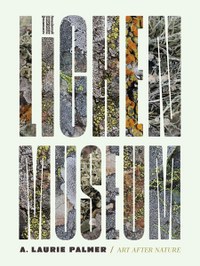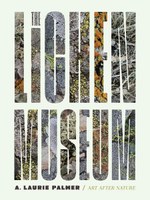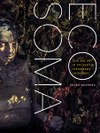The Lichen Museum
A. Laurie Palmer

LISTEN: A. LAURIE PALMER IN CONVERSATION WITH GIOVANNI ALOI AND CAROLINE PICARD
A radical proposal for how a tiny organism can transform our understanding of human relations
The Lichen Museum explores how the physiological characteristics of lichens provide a valuable template for reimagining human relations in an age of ecological and social precarity. Using this tiny organism as an emblem through which to navigate environmental and social concerns, Palmer implores us to envision alternative ways of living based on interdependence rather than individualism and competition.
"The Lichen Museum is a deeply engaging, provocative, humorous, and moving account of why we should pay more attention to lichens. As lichens can be found anywhere, the entire surface of the earth becomes the lichen museum. A. Laurie Palmer weaves together personal anecdotes, theoretical interventions, photography, and detailed research to draw attention to how lichens can offer new ways to think through questions of relationality, life and death, and our mutual obligations to each other."—Heather Davis, author of Plastic Matter
Serving as both a guide and companion publication to the conceptual art project of the same name, The Lichen Museum explores how the physiological characteristics of lichens provide a valuable template for reimagining human relations in an age of ecological and social precarity. Channeling between the personal, the scientific, the philosophical, and the poetic, A. Laurie Palmer employs a cross-disciplinary framework that artfully mirrors the collective relations of lichens, imploring us to envision alternative ways of living based on interdependence rather than individualism and competition.
Lichens are composite organisms made of a fungus and an alga or cyanobacteria thriving in a mutually beneficial relationship. The Lichen Museum looks to these complex organisms, remarkable for their symbiosis, diversity, longevity, and adaptability, as models for relations rooted in collaboration and nonhierarchical structures. In their resistance to fast-paced growth and commodification, lichens also offer possibilities for humans to reconfigure their relationship to time and attention outside the accelerated pace of capitalist accumulation.
Bringing together a diverse set of voices, including personal encounters with lichenologists and lichens themselves, Palmer both imagines and embodies a radical new approach to human interconnection. Using this tiny organism as an emblem through which to navigate environmental and social concerns, this book narrows the gap between the human and natural worlds, emphasizing mutual dependence as a necessary means of survival and prosperity.
Awards
A CHOICE Outstanding Academic Title
$24.95 paper ISBN 978-1-5179-0867-6
$100.00 cloth ISBN 978-1-5179-0866-9
184 pages, 21 b&w photos, 19 color plates, 6 x 8, 2023

A. Laurie Palmer is an artist and professor at the University of California, Santa Cruz.

The Lichen Museum is a deeply engaging, provocative, humorous, and moving account of why we should pay more attention to lichens. As lichens can be found anywhere, the entire surface of the earth becomes the lichen museum. A. Laurie Palmer weaves together personal anecdotes, theoretical interventions, photography, and detailed research to draw attention to how lichens can offer new ways to think through questions of relationality, life and death, and our mutual obligations to each other.
Heather Davis, author of Plastic Matter
Meditative and inquisitive, The Lichen Museum is an interdisciplinary work about learning from the most unassuming of species.
Foreword
Reading this work feels like taking a series of walks with a particularly curious and sensitive companion, consistently attentive to otherwise neglected facets of the actual environment.
e-flux
As an environmentally engaged artist, Palmer introduces readers to lichens through personal observations, extensive research, and critical evaluation of past and current scientific study of this complex living organism and offers her musings on the potential philosophical and poetic implications of these symbiotic organisms.
CHOICE
The Lichen Museum invites readers to slow down long enough to contemplate their environment and the many living things in it that they ignore every day, at their mutual peril.
California Review of Books

Contents
Welcome to the Lichen Museum
1. Watching
2. More than One
3. Lichen Time
4. In Place
5. Likeness
6. Refuse
7. Un/Common Sun
Before, During, and Afterword
Acknowledgments
Notes
Index
About This Book
Related Publications
 Vampyroteuthis Infernalis
A Treatise, with a Report by the Institut Scientifique de Recherche Paranaturaliste
Vampyroteuthis Infernalis
A Treatise, with a Report by the Institut Scientifique de Recherche Paranaturaliste











